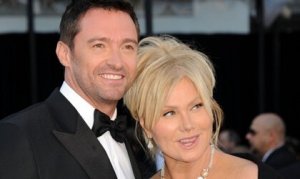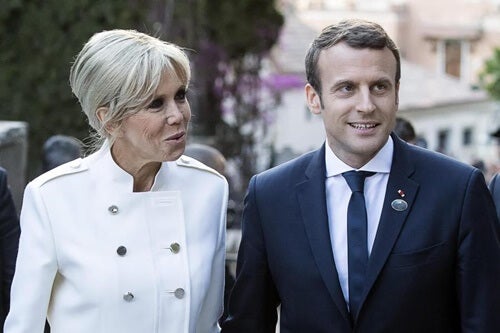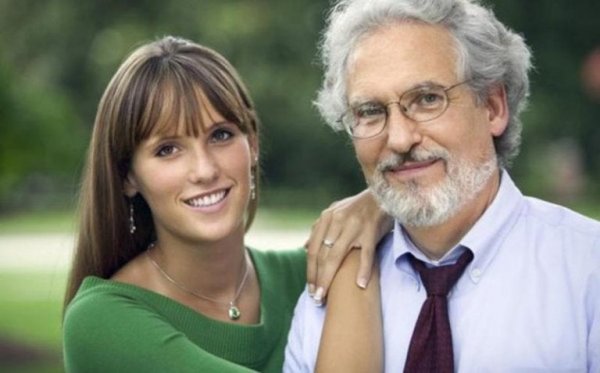Age Gaps in Relationships: Love Is More than Just a Number


Written and verified by the psychologist Valeria Sabater
True love doesn’t think about age differences; it’s about passion, attraction, and sharing the same values and a life project. Many people criticize relationships with big age gaps. However, many of them seem to be quite strong.
Big age differences in romantic relationships still often attract criticism. The age gap between two people who love each other continues to attract attention and often some rather unsavory comments.
Many of those who criticize them doubt that it’s real love. They suspect that there are ulterior motives in the relationship, on one side or the other.
Famous couples with age gaps
Emmanuel Macron and his wife Brigitte, Harrison Ford and Calista Flockhart, Michael Douglas and Catherine Zeta-Zones, Hugh Jackman and Deborra-Lee Furness… These are a few examples of famous couples whose age gaps haven’t prevented them from building solid and happy relationships.
However, despite the apparent progress in social values, these couples never seem to be exempt from criticism.
An example of this is the fact that, if there has to be an age gap, people still think it’s better if the man is the older one. If the woman is the older of the two, then the prejudice is greater.
Research on this same topic has shown that the weight of social disapproval can often be the cause of breakup in these relationships.
Love is blind and doesn’t know age. However, in our collective unconscious, we still think that if Cupid’s arrow strikes, then it should be with someone of a similar age.
“Love looks not with the eyes, but with the mind, and therefore is winged Cupid painted blind.”
-William Shakespeare, A Midsummer Night’s Dream–

Do age gaps in relationships really matter?
Having a big age difference is often a big challenge. This is usually because of the stigma behind it and the disapproval they perceive from those around them.
Recent studies conducted by Brian Collisson and Luciana Ponce De León from the University of San Diego pinpoint the following:
The relationship between two people with an age difference of between 15 and 20 years experiences what we know as perceptions of inequality.
Perceived inequality is built on social prejudices. The most common thing for people to think is that the older person is seeking to achieve a certain status through the relationship. They think that the person wants to be admired by those around them. This is especially true in the case of men. Having a younger partner can, in a way, imply a sense of conquest and boost self-esteem.
The younger person, on the other hand, using the same theory of perceived inequality, also falls foul to people’s criticism. They say that they just want to feel protected and to cover over the absence of a maternal or paternal figure. The other common supposition is that the younger partner is attracted by the financial status of the older partner.
The stigma is losing strength
It’s true that in some cases where there’s a big age gap, there may be people who are only in it for themselves – seeking status, financial security, and protection, among other things.
However, love that crosses the generations occurs more frequently than we might think. These romances that begin unexpectedly often end up avoiding these social stigmas until the relationship becomes solid.
Relationships between an older man and a younger woman are being increasingly accepted. However, there’s still some stigma attached to older women who live with younger men. The same also happens with gay and lesbian couples, where prejudice, on average, is double than that of straight couples.
In love, what matters is the values, not the numbers
Beyond the social stigma, the challenge that these couples usually face is the fact that they belong to two different generations. That difference in their social upbringing sometimes means that one of the partners has values and an educational background that are very different from the other. They may also have friends that are very different, and want to spend time in places that the other doesn’t.
Something like this usually happens when the age difference approaches or exceeds 20 years. Now, all of these challenges can be worked on over time. This is all provided that there’s harmony and that they respect the four basic pillars of every successful relationship:
- Having the same goals and outlook in life.
- Sharing the same values.
- Having a satisfactory sex life.
- Having personalities that complement each other.

In conclusion, we can compare age gaps between romantic partners, in many cases, to a bridge drawn between the two of them. This bridge has to cross social prejudices and unhelpful comments.
It’s true that love is never easy. There are obstacles to surmount, challenges to work on, and difficult situations to face. But if they face them together, and remain strong in their commitment to each other, then they can achieve everything they want to.
All cited sources were thoroughly reviewed by our team to ensure their quality, reliability, currency, and validity. The bibliography of this article was considered reliable and of academic or scientific accuracy.
- Collisson, Brian, and Luciana Ponce De Leon, “Perceived inequity predicts prejudice towards age-gap relationships,” Curr Psychol (2018), https://doi-org.libproxy.sdsu.edu/10.1007/s12144-018-9895-6.
- Lehmiller, Justin J., and Christopher R. Agnew, “Commitment in Age-Gap Heterosexual Romantic Relationships: A Test of Evolutionary and Socio-Cultural Predictions,” Psychology of Women Quarterly 32, no. 1 (March 2008): 74–82.
- The marital satisfaction of differently aged couples. Wang-Sheng Lee y Terra McKinnish. Journal of Population Economics 2017 doi.org/10.1007/s00148-017-0658-8
This text is provided for informational purposes only and does not replace consultation with a professional. If in doubt, consult your specialist.








